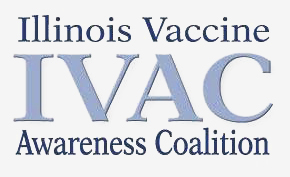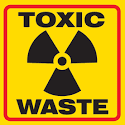Worried about mercury in the environment? Here’s one way to help: Go get a flu shot.
More than 100 million doses of flu vaccine have been delivered this year, with another 10-15 million on the way — a US record (the previous record was 83 million) to help meet the CDC’s goal of vaccinating two out of every three people in the country.
But now it seems that “drumming up demand for so much vaccine,” as The New York Times put it on Sunday, has been too great a challenge for the CDC, leaving medical officials like Matthew Stefanak, health commissioner of Mahoning County, Ohio, to give flu shots away “by the carload.”
Because flu vaccine can only be used in a single year, one official was “concerned that we’ll throw away 20 million doses” this year, a number that could go much higher if the current flu season remains mild.
But you can’t just “throw away,” flu vaccine. You practically need a hazmat team.
Most flu shots contain thimerosal, a vaccine preservative made with 50% mercury – a deadly neurotoxin. Each adult dose contains 50 micrograms of thimerosal, in a solution concentration of 1:10,000, or the equivalent of 50,000 parts per billion (ppb) of mercury.
To put this in perspective, any liquid that exceeds 200 ppb mercury is considered to be “hazardous waste,” (and drinking water cannot exceed 2 ppb). The flu shot, therefore, contains mercury in levels 250 times higher than what hazardous waste regulations say is safe.
And according to my math, 20 million doses at 25 micrograms per dose leaves us with 500 grams (1.1 pound) of mercury to somehow dispose of.
It’s not really clear if anyone is responsible for rounding up all that mercury from every clinic, hospital, supermarket, etc., and disposing of it in a way that will harm neither humans nor the environment. (The US Army, according to its website, calls for the incineraton of expired flu shots, and forbids discharge into a “sanitary sewer”).
But incernation is not the answer, of course, because all that mercury will be returned directly to the environment and one day end up in somebody’s fish sandwich.
Unless, that is, we all go out this week and get a flu shot. We can each do our part to eliminate this potential ecological mishap while also delighting CDC Director Dr. Julie Gerberding, who is on the air now exhorting us all to “catch the holiday spirit and not the flu,” and go get that shot.
Then again, perhaps you don’t relish the idea of injecting hazardous materials directly into yourself or your children. If you are a 100-pound woman, you should know that those 25 mcg of mercury will put you five times over the EPA daily exposure limit. Of course, if you are pregnant, most of the mercury will be absorbed by your fetus, which is good news for you, but…
Is the flu shot important for certain sectors of the population? Of course it is, and I am glad we have enough to inoculate them. Anyone who feels they need protection from the flu should be able to obtain a vaccine easily, if not “by the carload.”
But is it too much to ask for a flu shot that’s not too hazardous to pour down a sewer?

